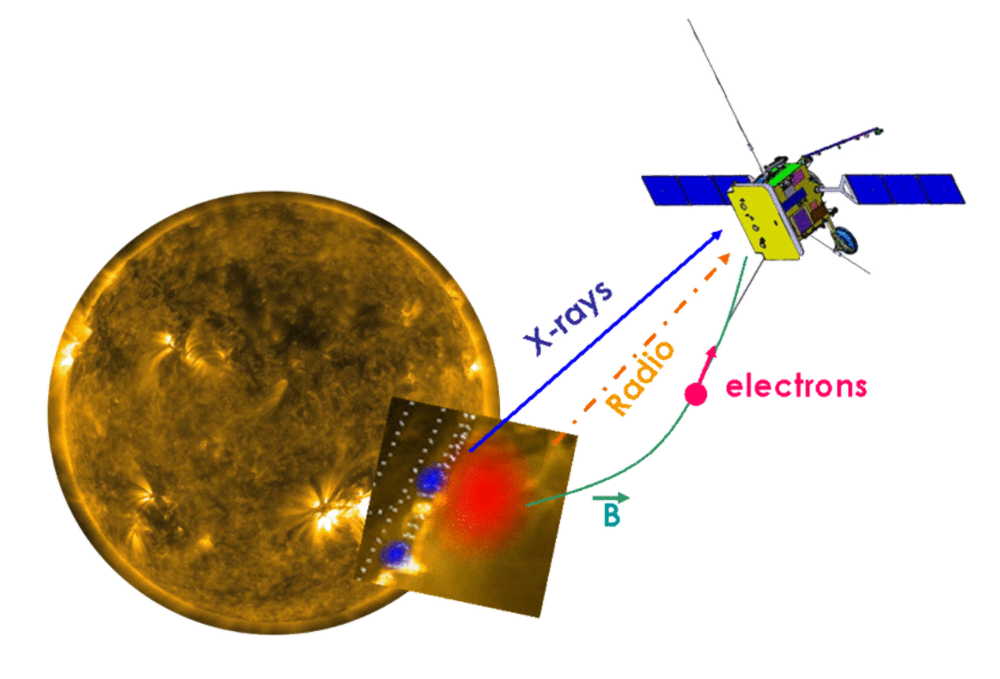Combined LOFAR - Parker Solar Probe / Solar Orbiter observations
Solar eruptive events, especially solar flares, are sources of intense fluxes of energetic electrons. When these electrons propagate through the corona, they generate radio waves through the plasma emission mechansim. The frequency of such radio waves only depends on the electron density at the source, and on no other plasma parameters. Typical densities in the middle and upper corona correspond to LOFAR‘s frequency range of 10 – 250 MHz. Lower frequencies, corresponding to the transition from the corona into the solar wind, cannot penetrate Earth‘s ionosphere and are thus only observable by spacecraft instruments.
There are currently two space missions exploring the inner heliosphere, Parker Solar Probe (PSP) and Solar Orbiter. Both spacecraft have highly elliptical orbits. PSP approaches the Sun closely with perihelia down to 10 solar radii. Solar Orbiter stays further away from the Sun with a perihelion distance of 0.28 AU, but unlike PSP it is equipped with optical, EUV, and X-ray telescopes directed toward the Sun. Both spacecraft also carry radio instruments that can trace a solar radio burst through interplanetary space, plus particle detectors that record energetic electrons in-situ.

X-ray, radio, and in-situ observations of energetic electrons on their way from the corona through interplanetary space.
Credit: AIPThe image shows the connection between X-ray, radio, and in-situ observations. The combination of X-ray emission near the sources of energetic electrons, radio emission along their path through the corona and interplanetary space, and in-situ data reveal information on the production mechanism and transport properties of these electrons.
Therefore, radio observations with LOFAR and spacecraft data ideally complement each other. Joint observing campaigns between LOFAR and PSP have already been successfully conducted, future ones with PSP and Solar Orbiter are planned. Such campaigns make use of LOFAR‘s capability of simultaneously running different observing modes with subsets of the LOFAR array:
- Interferometric imaging of the solar corona
- „Beam-formed“ imaging of the Sun with low spatial and high temporal resolution
- Dynamic radio spectra
- Interplanetary scintillation measurements
- Pulsar observations to study interplanetary magnetic fields
Therefore, they provide a comprehesive view of the inner heliosphere. For the data analysis we have been granted the DFG project “LOFAR observations of the solar corona during Parker Solar Probe perihelion passages” whithin the Polish - German funding initiative “BEETHOVEN CLASSIC 3”, in collaboration with the University of Warmia and Mazury in Olsztyn, Poland.